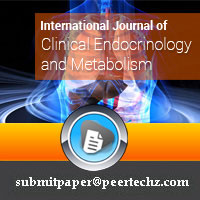International Journal of Clinical Endocrinology and Metabolism
Dyslipidemia in coronavirus disease 2019 pneumonia patients
Peng Cao1,2#, Sanlan Wu1,2#, Tingting Wu1,2, Qilin Zhang1,2, Rui Zhang1,2 and Yu Zhang1,2*
Cite this as
Cao P, Wu S, Wu T, Zhang Q, Zhang Y, et al. (2020) Dyslipidemia in coronavirus disease 2019 pneumonia patients. Int J Clin Endocrinol Metab 6(1): 033-034. DOI: 10.17352/ijcem.000051Coronavirus disease 2019 (COVID-19) pandemic has become a global threat to public health, risk factors of COVID-19 is in urgent need in this fight. We collected data and clinical records from 123 COVID-19 patients at Wuhan Union hospital, China. Of 123 patients enrolled, 6 died in hospital and the other 117 survived. It is noteworthy that lipid levels, especially HDL-c, significantly differed between survivors and non-survivors. We suppose that HDL-c might also be a risk factor of COVID-19. Medical staff should pay more attention to the lipid levels of COVID-19 infected patients.
Main text
Coronavirus disease 2019 (COVID-19) pandemic has become a global threat to public health, proper prevention and management are essential to combat this disease [1]. In a recent study published in Metabolism by Fan, et al. [2], in which the authors supposed that LDL-c served as a factor to predict disease mortality. However, there might be some bias of their conclusion because 4 out of 21 patients did not survive (19.5% mortality) in their study, which is inconsistent with a big data statistics of 8910 patients (5.8% mortality) [3]. This might attribute to the small sample size of their analysis.
In order to identify lipid profile of coronavirus disease 2019 (COVID-19) patients between survivors and non-survivors, herein we analyzed a panel of 123 patients with detection of serum lipid levels, who were admitted between January 12, 2020 and March 5, 2020 at Wuhan Union hospital, China. All patients were confirmed cases of COVID-19 after examination of COVID-19 RNA by RT-PCR (upper respiratory throat swab samples) and chest Computerized Tomography (CT) scanning. Six out of 123 patients died in hospital (4.9% mortality), which was consistent with previous conclusion [3].
The clinical data were acquired in the hospitalization management system by well-trained researchers with a double-blind method. Data collection of laboratory results were defined using the first-time examination at admission. Of the 123 patients, 17 manifested elevated TG levels and only 6 patients revealed abnormal TC levels. However, most of them manifested abnormal HDL-c and LDL-c levels. Specifically, the HDL-c levels of 19 and 81 patients were elevated and reduced, respectively. Similarly, 14 and 91 patients manifested increased and decreased LDL-c levels, respectively.
As shown in Table 1, we analyzed serum biomarkers of glucose/lipid metabolism and liver function. HDL-c level in non-survivors is significantly lower than that of survivors (median 0.69 vs 1.03, p=0.006). Consistent with the study by Fan, et al. [2], LDL-c level of non-survivors was decreased by 32.9% when compared with survivors, but statistical significance was not observed due to the fluctuation and insufficient number of LDL-c determination (median 1.57 vs 2.34, p=0.114). In addition, median TC level was decreased while median TG levels was slightly increased in non-survivors as compared with survivors, but there was still not any significant statistical difference.
Apart from lipid profile, fasting blood glucose (FBG) level of non-survivors was remarkedly elevated when compared with survivors, reaching a diabetic level (median 7.67 mmol/L). Of note, 2 of the 6 deceased patients had diabetic history, which might influence the reliability of the comparison of FBG. Previous observations discovered that liver injury was prevalent in patients with COVID-19 [4]. Fan, et al. supposed that liver injury might be a potential cause of lipid dysfunction [2]. Therefore, we calculated a panel of liver function indicators, finding that liver injury was significantly more severe in non-survivors than survivors. However, whether lipid metabolism dysfunction is a cause or result of liver function still need further investigation.
In summary, abnormal HDL-c and LDL-c are often observed in COVID-19 patients, but their TG and TC levels usually do not exceed the standard. Apart from LDL-c, we suppose that HDL-c might also be a risk factor of COVID-19. Altered lipid profile is associated increased risk of cardiovascular disease events [5]. So medical staff should pay more attention to the lipid levels of COVID-19 infected patients.
We suppose that the dyslipidemia, especially HDL-c, plays an important role in pathological development of COVID-19, which mechanism requires further investigation. Our results demonstrate that HDL-c decrease is closely associated with COVID-19, which might serve a factor to access the disease progression and mortality.
We acknowledge all the front-line medical staffs fighting against COVID-19. We show our respect to those who have sacrificed in this war.
Funding
This study was supported by the National Natural Science Foundation of China (Grant No. 81903901).
- Ali I, Alharbi OML (2020) COVID-19: Disease, management, treatment, and social impact. Sci Total Environ 728: 138861. Link: https://bit.ly/3q3LsRo
- Fan J, Wang H, Ye G, Cao X, Xu X, et al. (2020) Low-density lipoprotein is a potential predictor of poor prognosis in patients with coronavirus disease 2019. Metabolism 107: 154243. Link: https://bit.ly/37bnUkV
- Mehra MR, Desai SS, Kuy S, Henry TD, Patel AN, et al. (2020) Cardiovascular Disease, Drug Therapy, and Mortality in Covid-19. N Engl J Med 382: 2582. Link: https://bit.ly/3fuNYLu
- Zhang C, Shi L, Wang FS (2020) Liver injury in COVID-19: management and challenges. Lancet Gastroenterol Hepatol 5: 428-430. Link: https://bit.ly/2JaYPyr
- Kotler DP (2008) HIV and antiretroviral therapy: lipid abnormalities and associated cardiovascular risk in HIV-infected patients. J Acquir Immune Defic Syndr 49: S79- S85. Link: https://bit.ly/3l0fvp3
Article Alerts
Subscribe to our articles alerts and stay tuned.
 This work is licensed under a Creative Commons Attribution 4.0 International License.
This work is licensed under a Creative Commons Attribution 4.0 International License.

 Save to Mendeley
Save to Mendeley
